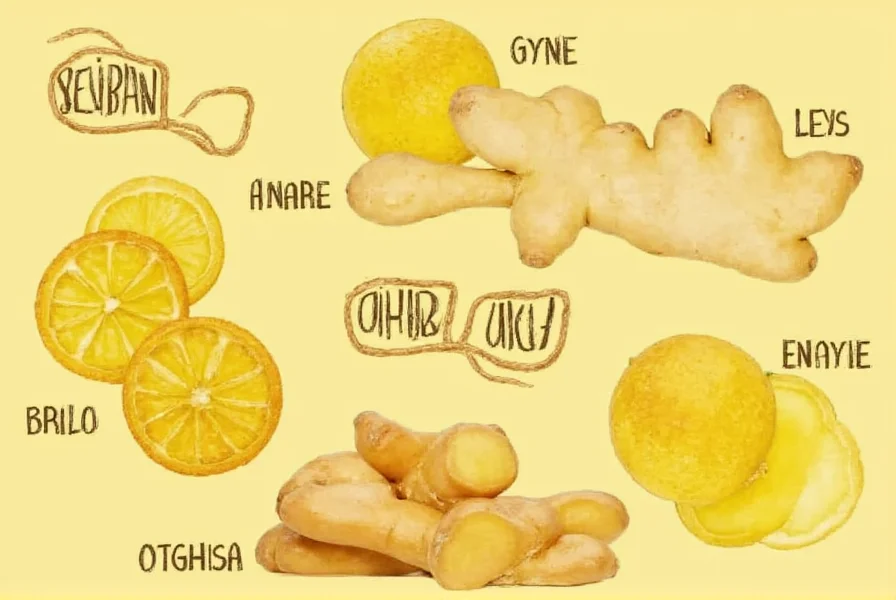Learning how to say ginger in Spanish opens doors to authentic cooking, travel conversations, and cultural understanding. Whether you're browsing a mercado in Mexico, ordering ingredients in Madrid, or following a Spanish recipe, knowing this essential culinary term proves invaluable.
Understanding "Jengibre": Pronunciation and Usage
Mastering the pronunciation of jengibre ensures clear communication. The word is pronounced hen-HEE-bray in most Spanish dialects. The "j" makes a guttural sound similar to the "ch" in the Scottish word "loch" or the German "Bach." The stress falls on the second syllable, which is crucial for proper Spanish pronunciation.
The term's remarkable consistency stems from its deep linguistic journey. "Jengibre" entered Spanish through Arabic during the 10th-12th century Moorish period in Iberia, evolving from the Sanskrit "śṛṅgavēra" (meaning "horn-shaped body") via Persian "zangabīl" and Medieval Latin "gingimber." This historical pathway, verified through etymological research at Spain's Royal Academy of History, explains its universal adoption across Spanish-speaking regions. (Source: Royal Academy of History Archives)
Unlike many culinary terms that exhibit regional variations (such as "trucha" for avocado in parts of South America), jengibre maintains near-perfect consistency across all Spanish-speaking countries. However, contextual boundaries exist: while universally appropriate for culinary and medicinal contexts, scientific discussions may reference the botanical name Zingiber officinale. The Royal Spanish Academy confirms no significant regional alternatives exist for everyday usage, though Caribbean dialects occasionally use "jengibre" with slightly softer pronunciation. (Source: RAE Dictionary of Doubts) This linguistic uniformity makes it one of the more straightforward translations for culinary ingredients. When shopping for fresh ginger root, you can confidently ask for "jengibre fresco" or simply "jengibre."
Common Contexts for Using "Jengibre"
Ginger appears in numerous Spanish culinary and medicinal contexts. Understanding these applications helps you use the term appropriately:
| English Phrase | Spanish Translation | Context of Use |
|---|---|---|
| Ginger root | Raíz de jengibre | When specifying the fresh root form |
| Ginger tea | Té de jengibre | Common medicinal or soothing beverage |
| Ground ginger | Jengibre en polvo | Referring to the powdered spice form |
| Candied ginger | Jengibre cristalizado | Sweetened ginger preparation |
When following Spanish recipes, you'll frequently encounter jengibre in dishes ranging from traditional Mexican mole sauces to Cuban marinades and Peruvian ceviche variations. The ingredient's versatility explains its widespread use across Latin American and Spanish cuisines.

Avoiding Common Translation Mistakes
Many English speakers mistakenly assume "ginger" translates to something resembling the English word. Some common errors include:
- Using "ginger" as is (not recognized in Spanish)
- Confusing with "jengibre" with "jengue" (not a real word)
- Mistaking it for "cúrcuma" (turmeric)
Unlike regional variations that exist for some food terms, jengibre remains consistent throughout the Spanish-speaking world. This makes it one of the more reliable culinary translations to learn. Whether you're in Spain, Argentina, or the Dominican Republic, asking for jengibre will get you exactly what you need.
Cultural Significance of Ginger in Spanish-Speaking Countries
Ginger plays an important role in traditional medicine across many Spanish-speaking cultures. In Mexico, té de jengibre commonly treats colds and digestive issues. Across Central America, ginger features prominently in traditional remedies for inflammation and pain relief.
Culinary applications vary by region. In coastal Peru, fresh jengibre enhances ceviche preparations. Cuban cuisine uses it in mojos (marinades), while in Spain's Canary Islands, ginger appears in traditional desserts and beverages.

Practical Examples in Conversation
Knowing how to say ginger in Spanish becomes truly useful when applied in real situations:
"¿Dónde puedo comprar jengibre fresco?" (Where can I buy fresh ginger?)
"Necesito jengibre para esta receta." (I need ginger for this recipe.)
"El jengibre ayuda con la digestión." (Ginger helps with digestion.)
When shopping at markets, vendors will recognize jengibre immediately. For medicinal purposes, pharmacists understand requests for jengibre whether you're seeking the fresh root, dried powder, or prepared teas.
Related Vocabulary for Spanish Learners
Expanding your ginger-related vocabulary enhances communication:
- Jengibre fresco - Fresh ginger
- Jengibre seco - Dried ginger
- Raíz de jengibre - Ginger root
- Jengibre molido - Ground ginger
- Té de jengibre - Ginger tea
Understanding these variations helps when navigating recipes, grocery stores, or health food shops in Spanish-speaking environments. The consistency of the root word jengibre makes these compound terms relatively easy to remember.
Final Thoughts on Ginger Translation
Mastering how to say ginger in Spanish represents a small but significant step in language proficiency. Unlike many culinary terms that vary by region, jengibre provides a reliable translation that works universally across the Spanish-speaking world. Whether you're cooking, traveling, or simply expanding your vocabulary, this essential term serves as a practical building block for authentic communication.
Frequently Asked Questions
How do you pronounce 'jengibre' in Spanish?
Jengibre is pronounced hen-HEE-bray. The 'j' makes a guttural sound similar to the 'ch' in Scottish 'loch,' and the stress falls on the second syllable.
Is 'jengibre' the same in all Spanish-speaking countries?
Yes, 'jengibre' is the standard term for ginger across all Spanish-speaking countries with no significant regional variations.
What's the difference between 'jengibre' and 'raíz de jengibre'?
'Jengibre' refers to ginger in general, while 'raíz de jengibre' specifically means ginger root, emphasizing the fresh, whole form of the ingredient.
How do you say 'ginger tea' in Spanish?
Ginger tea translates to 'té de jengibre' in Spanish and is commonly consumed for its medicinal properties throughout Spanish-speaking cultures.
Can I use 'jengibre' for both the spice and the plant?
Yes, 'jengibre' works for both the spice and the plant. Context determines whether you're referring to the culinary ingredient or the living plant.










 浙公网安备
33010002000092号
浙公网安备
33010002000092号 浙B2-20120091-4
浙B2-20120091-4